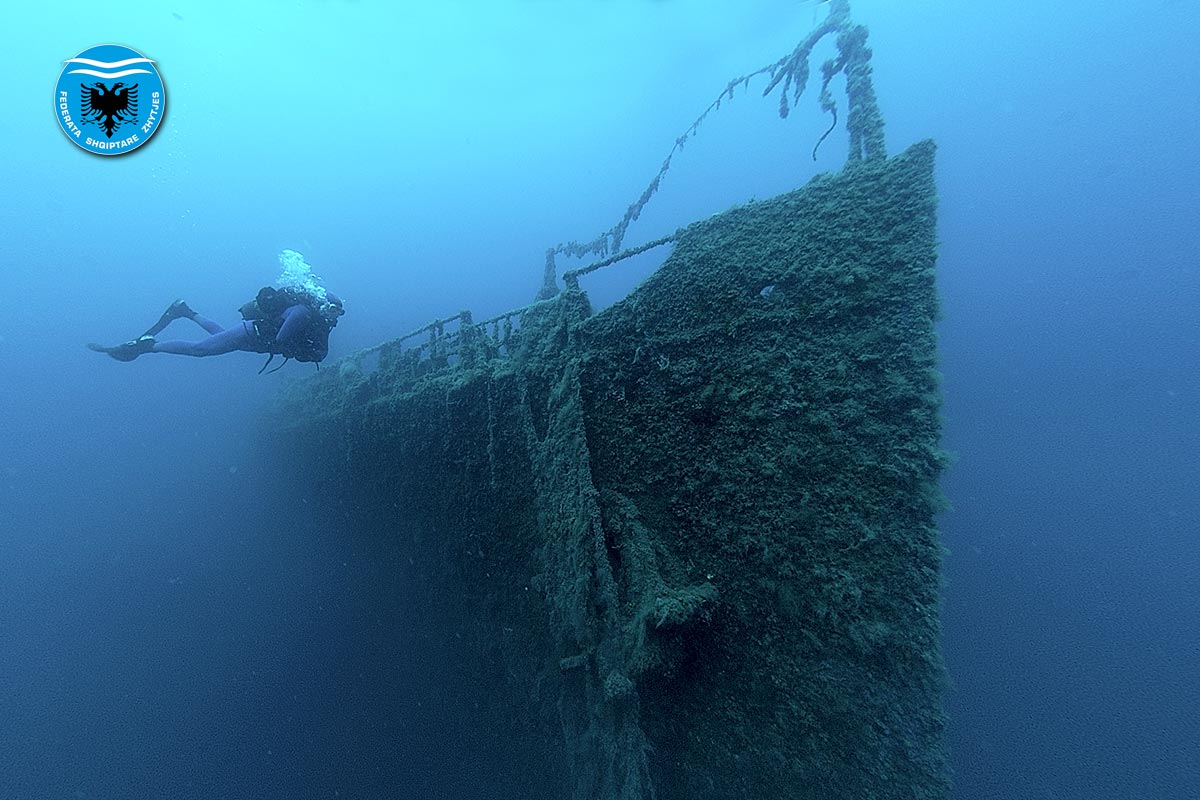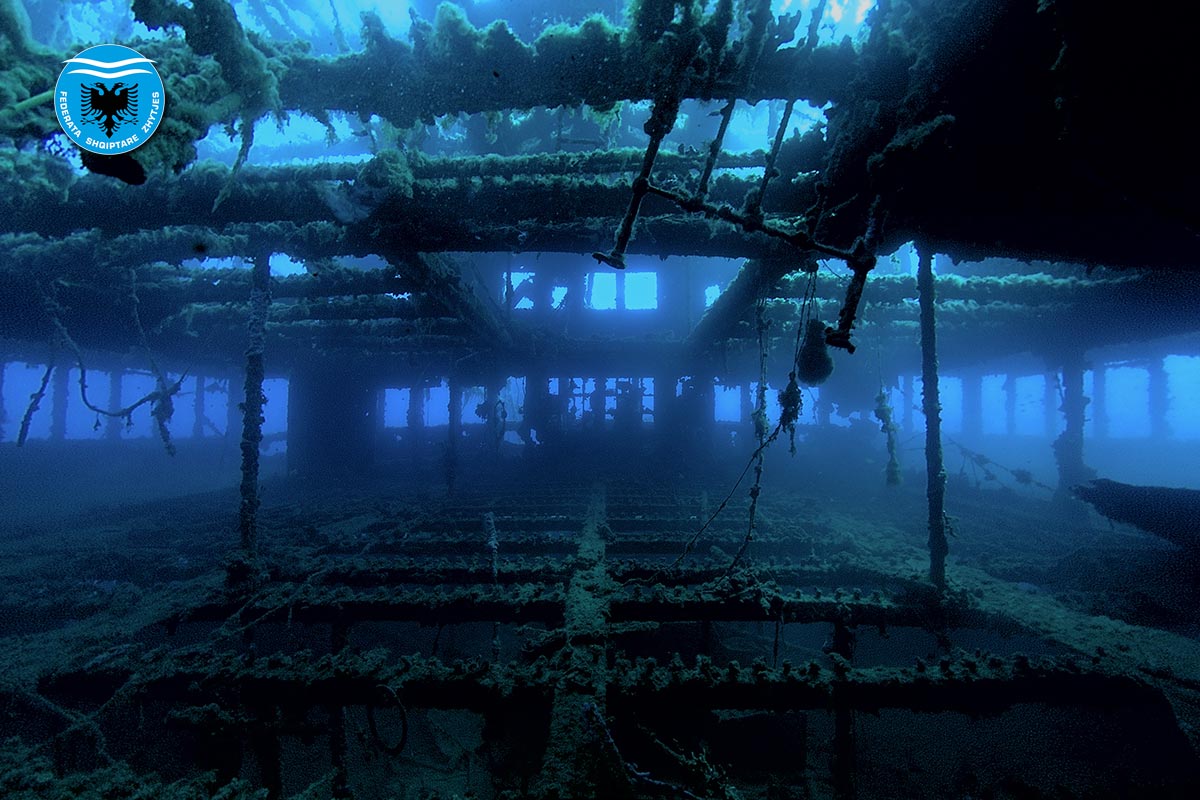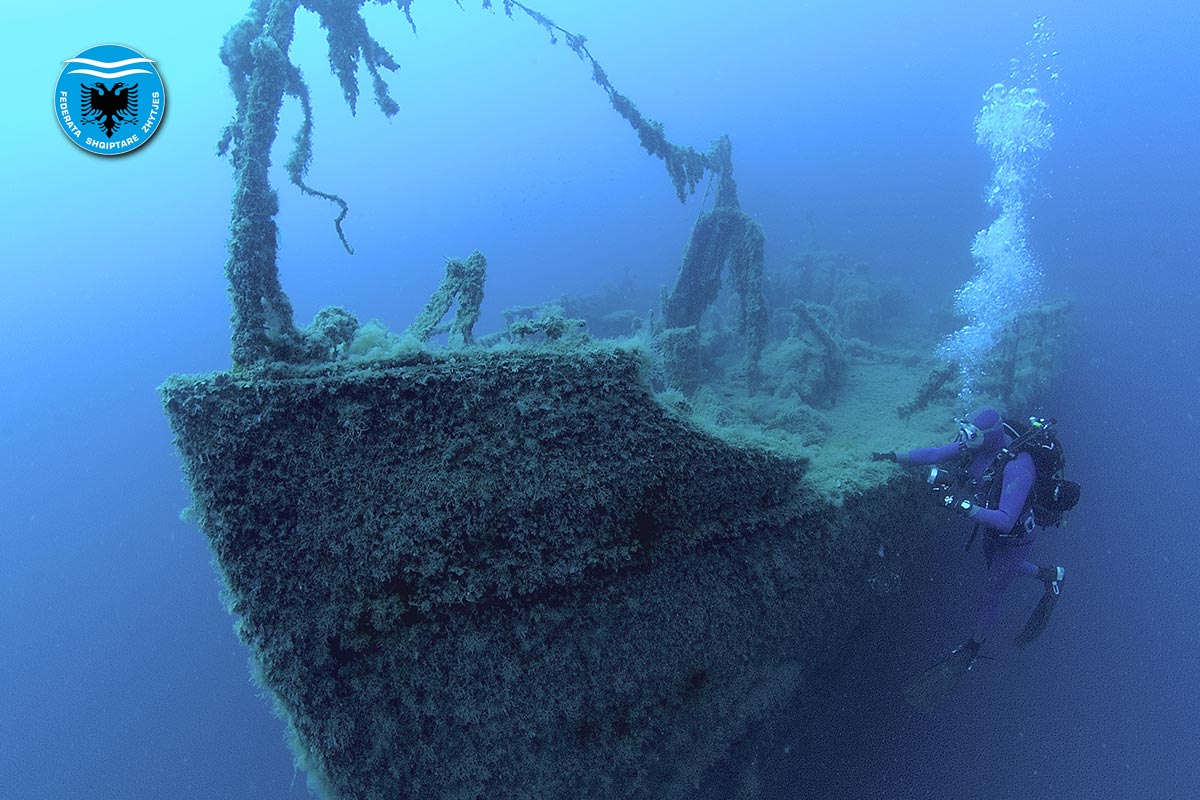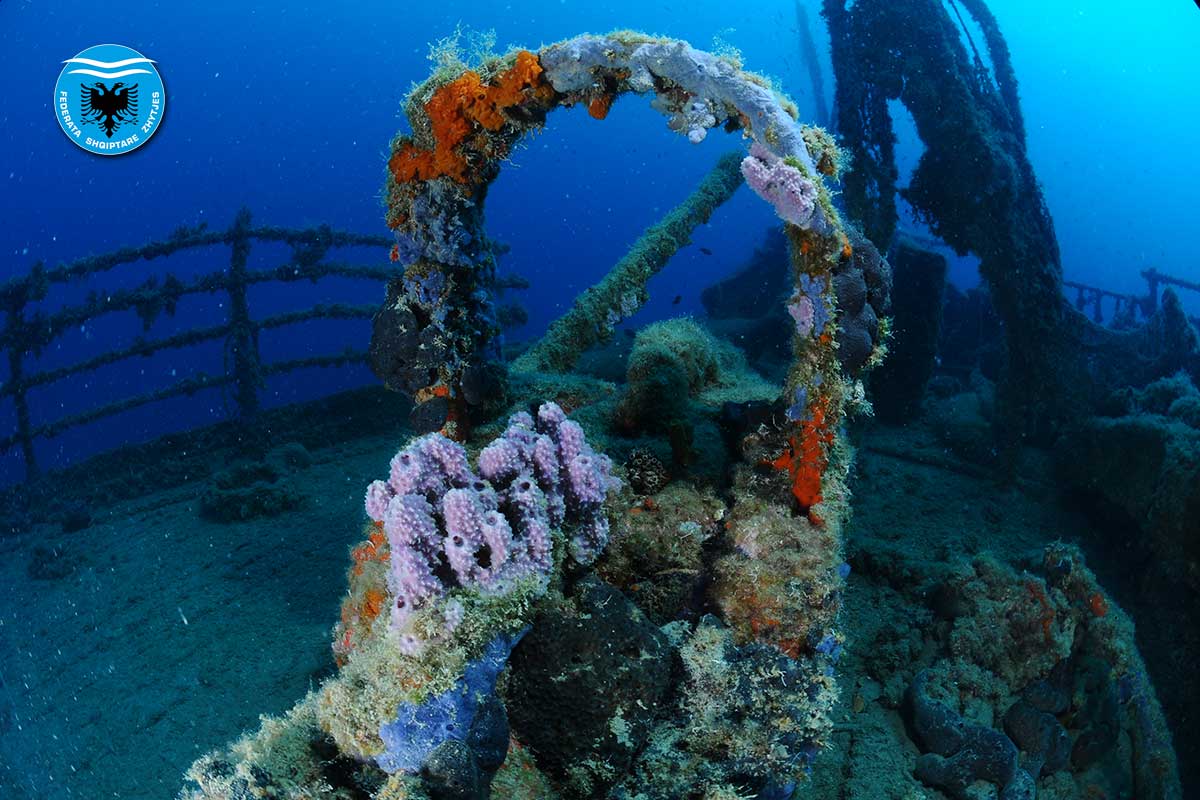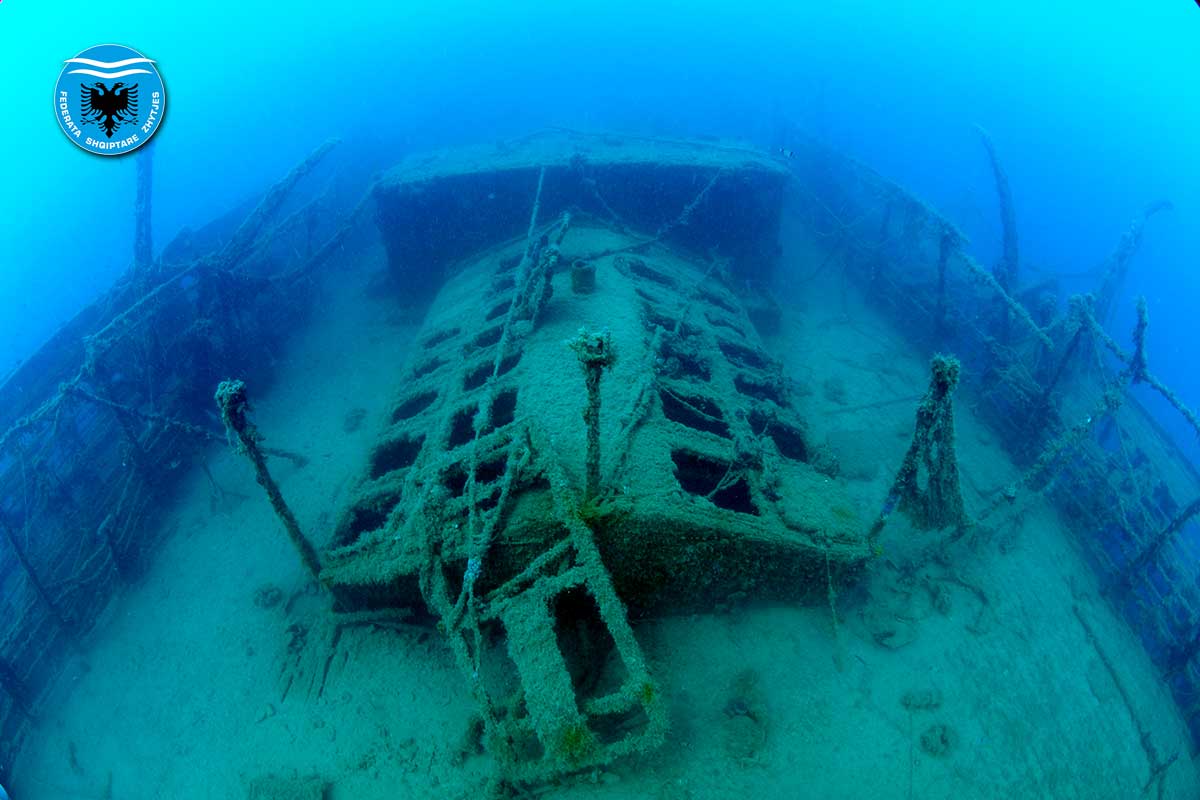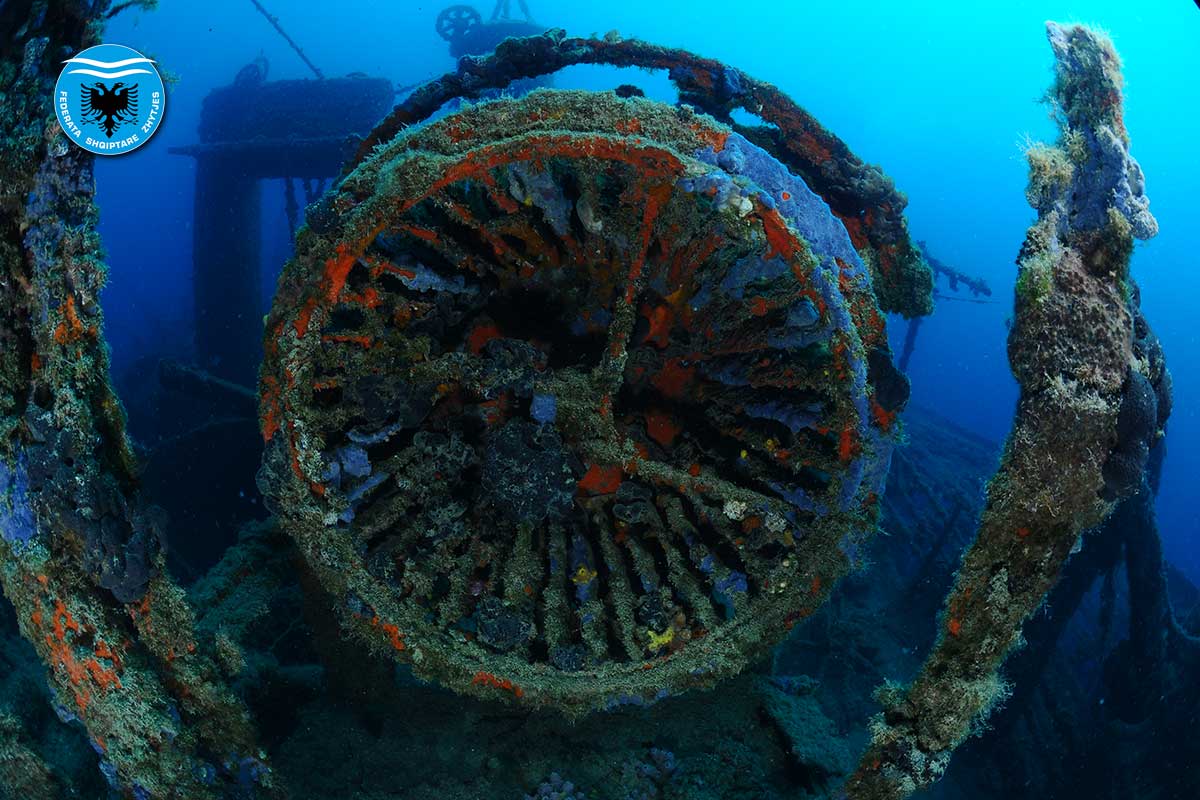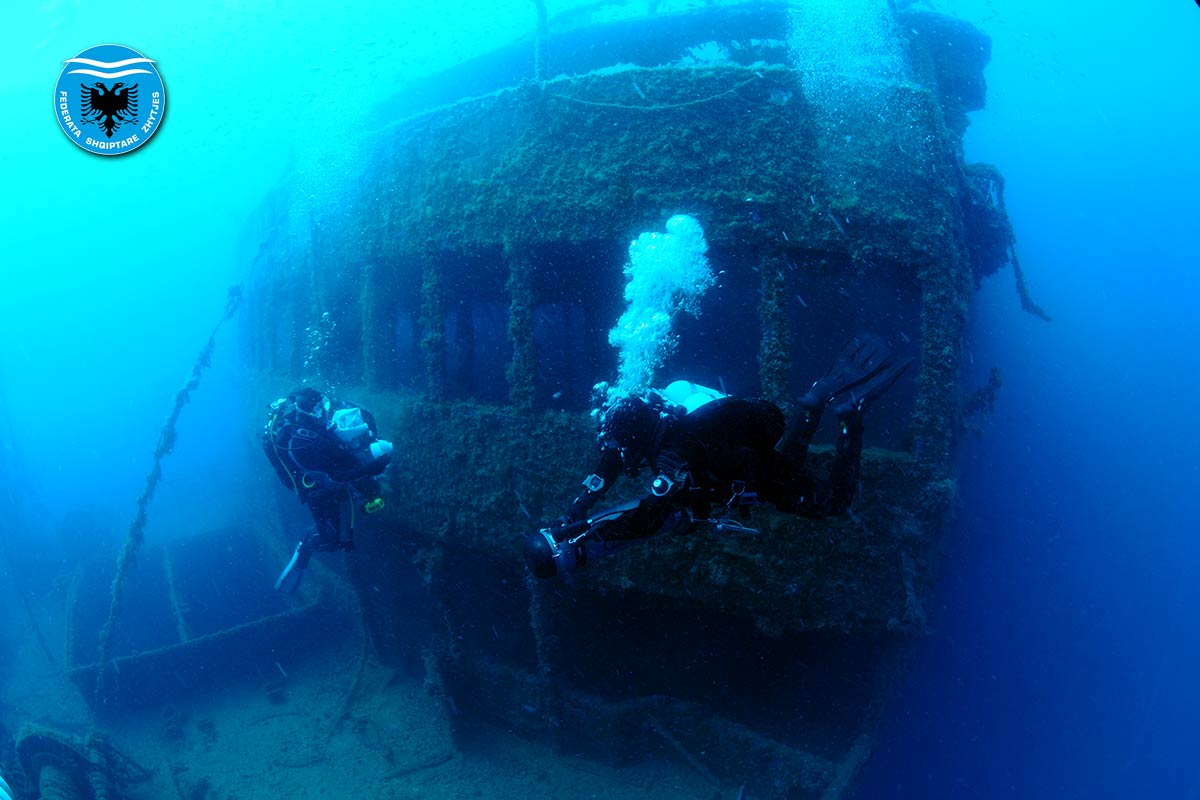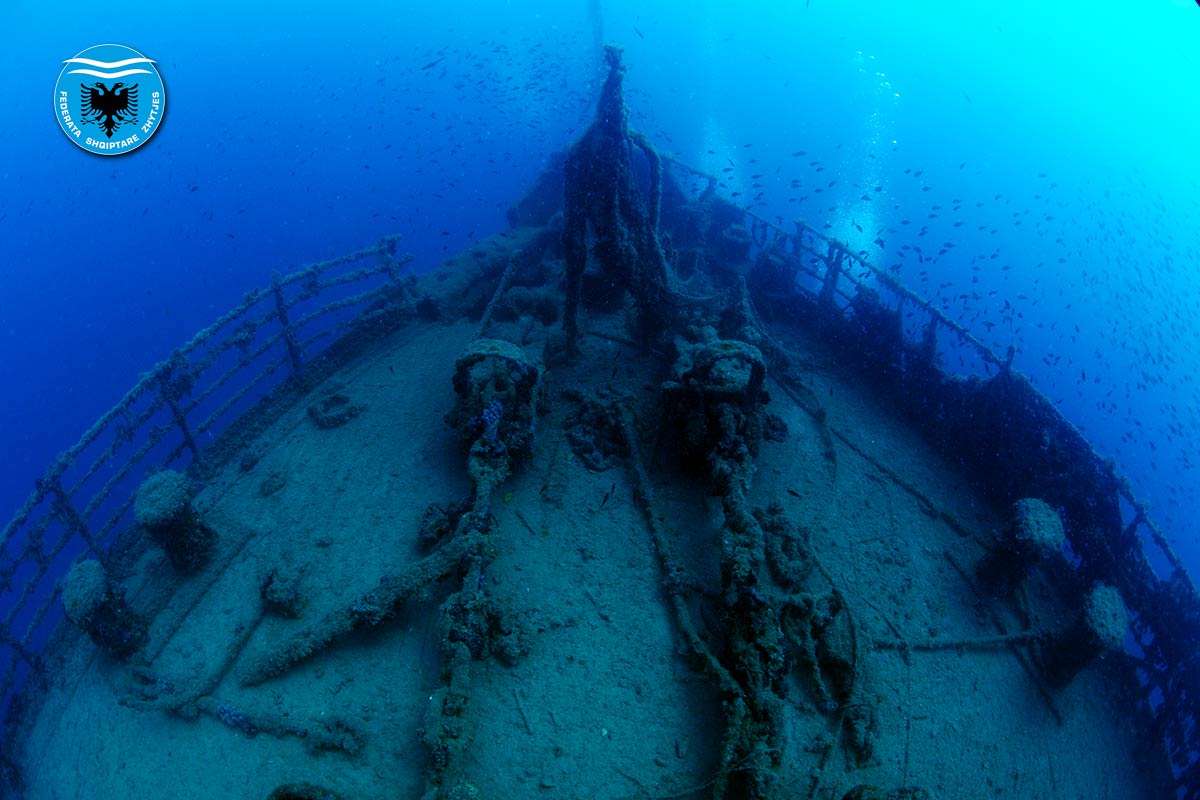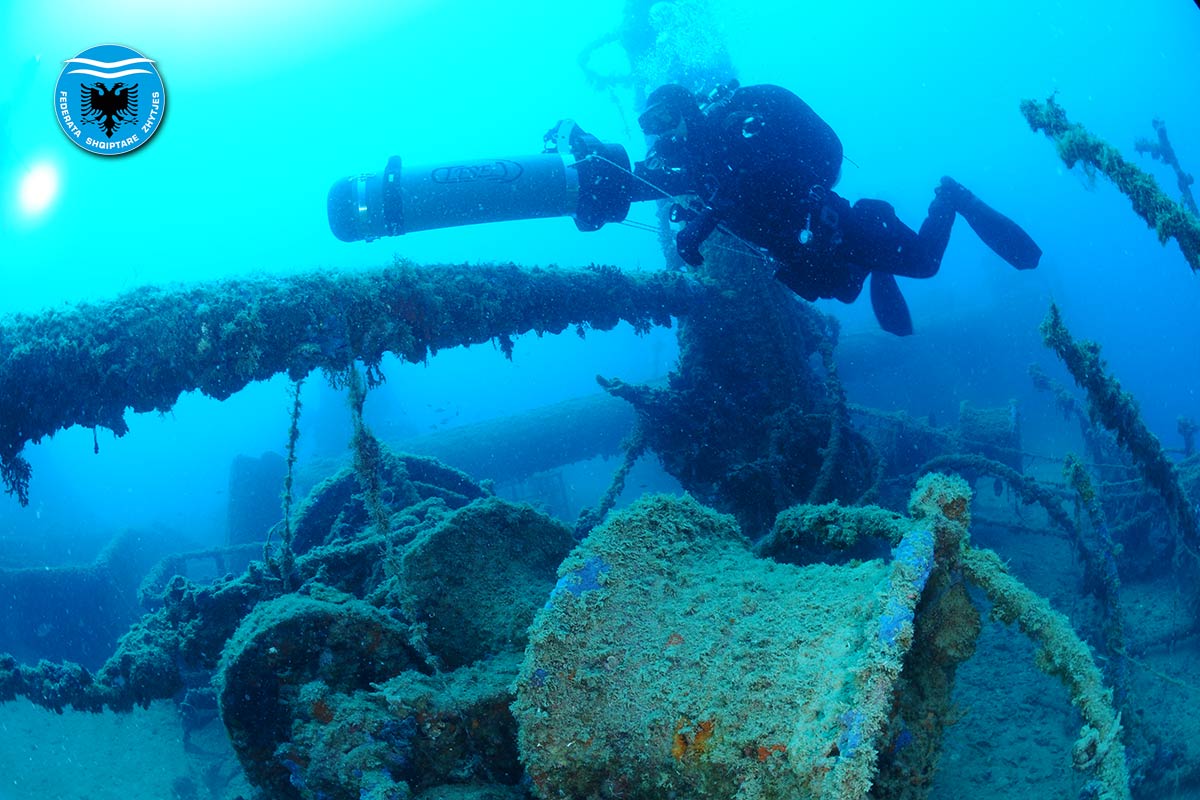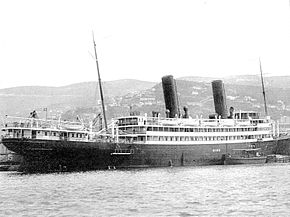 The wreck of the hospital ship, lying in navigation position one mile from the coast, Depth between 30 meters and 35 meters and in fairly good condition (the upper structures reach up to 12 meters from the surface
The wreck of the hospital ship, lying in navigation position one mile from the coast, Depth between 30 meters and 35 meters and in fairly good condition (the upper structures reach up to 12 meters from the surface
Built between 1909 and 1911 together with the twin unit Helouan for the Austrian Lloyd, based in Trieste, the ship was originally a mixed steamer of 7357 gross tonnage and 3199 net tonnage: flying the Austro-Hungarian flag, the ship was called Wien.
Powered by two quadruple expansion steam engines (powered by eight boilers) with a nominal power of 1580 hp (10,000 HP), the ship was equipped with a reasonable speed for the time (17 knots), but was afflicted by strong problems roll and poor seaworthiness.
In the cabins 185 passengers in first class, 61 in the second and 54 in the third, could fit.
In view of the entry of Italy into the Second World War, the Po was requisitioned on May 21, 1940 and registered as the auxiliary ship of the State this time as a real hospital ship, with 600 beds. , the ship, equipped with adequate medical equipment (which included an operating room, some surgeries and dressing rooms, rooms equipped for radiology and analysis laboratories and boarded medical personnel, entered service in July 1940
In September 1940 the Po was the first hospital ship to be sent to Albania, carrying out a single mission to transport the injured and sick (a particular problem in this area was malaria), as part of the clearing operations of Albanian hospitals in preparation of the attack on Greece. This “medical evacuation” plan was completed by the Po itself with a second mission of the same type, in October 1940
On the evening of March 14, 1941, the Po arrived in Vlora to embark injured and sick people to be repatriated (coming from two field hospitals, number 403 and another located on the hills in front of the bay of Vlora, an operation that would take place the next day. morning.
After arrival, the ship landed in the Vlora harbor, about a mile and a half from the coast. Although equipped with marks for night recognition, the ship was forced by the Marina di Valona Command to keep the lights off so as not to contravene the darkening rules, given that it was feared that the identification of the Po, in the event of an air attack, would also involved the location of the other units, merchant and military, moored nearby.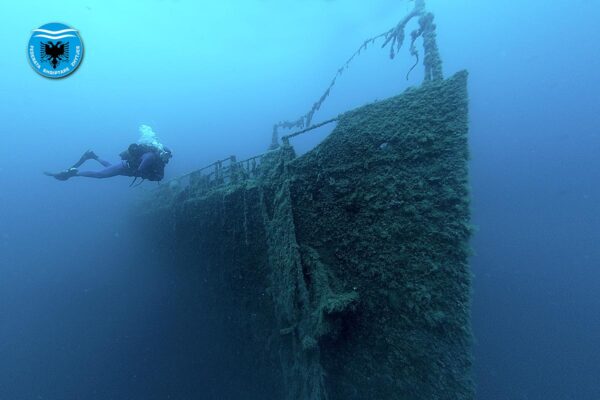
Shortly after eleven o’clock the same evening, when most of the crew of the unit had retired to their premises for the night, the bay of Vlora was subjected to an attack by five torpedo bombers Fairey Swordfish of the 815th Squadron of the Fleet Air Arm, which took off at 9.15 pm from the Greek airport of Paramythia (in the same attack one of the Swordfish was shot down, that of the commander of the 815th Squadron, captain of corvette Jago, and the steamship Santa Maria was sunk, then recovered and put back into service
The Po, being darkened, was not recognized, and at 11.15 pm it was hit on the starboard side of the stern by a 730 kg torpedo released by the Swordfish of the lieutenant Michael Torrens Spence.
After the torpedo, the current went out and the ship began to dock quickly, embarking water, therefore the alarm was sounded and crew and medical personnel were gathered on deck, after which the lifeboats were lowered. During the abandonment of the ship one of the boats capsized: two red crosses, Wanda Secchi and Emma Tramontani, were injured by being thrown from the water against the wall of the agonizing ship and drowned, while a third, Maria Federici, who had tried to save them , she also drowned in the attempt, despite the intervention of an officer, who threw herself into the sea to help her.
Two minutes after the impact from the torpedo the stern of the ship was already submerged.
Some of the survivors clung to wreckage that had fallen off the ship, others swam to the shore (like an officer) or a destroyer moored nearby, while four men died of hypothermia after being rescued. Some shipwrecked ones, including Edda Ciano, also embarked as a red cross, were recovered from a fishing boat after clinging to the wreck of a lifeboat, which remained half submerged because it was still tied to the wreck of the hospital ship.
A total of 23 people were killed in the sinking, twenty seafarers out of a total of 240 people, including crew and medical personnel, embarked on the Po.
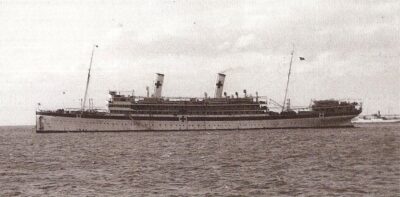 The Italian propaganda did not speak of intentional attack, being the Po obscured, but highlighted the death of 23 people and especially of the red crosses, while efforts were made not to highlight, by direct order of Benito Mussolini, the presence of Edda Ciano between the survivors, even if the news spread equally quickly. In the days following the sinking eight divers of the Royal Navy, transported by three naval units, provided for the recovery of the bodies from the wreck of the hospital ship.
The Italian propaganda did not speak of intentional attack, being the Po obscured, but highlighted the death of 23 people and especially of the red crosses, while efforts were made not to highlight, by direct order of Benito Mussolini, the presence of Edda Ciano between the survivors, even if the news spread equally quickly. In the days following the sinking eight divers of the Royal Navy, transported by three naval units, provided for the recovery of the bodies from the wreck of the hospital ship.
During its service as a hospital ship, the Po had carried out 14 missions, transporting a total of around 6600 injured and sick 2300 injured and shipwrecked and 4300 sick from Libya and Albania.

